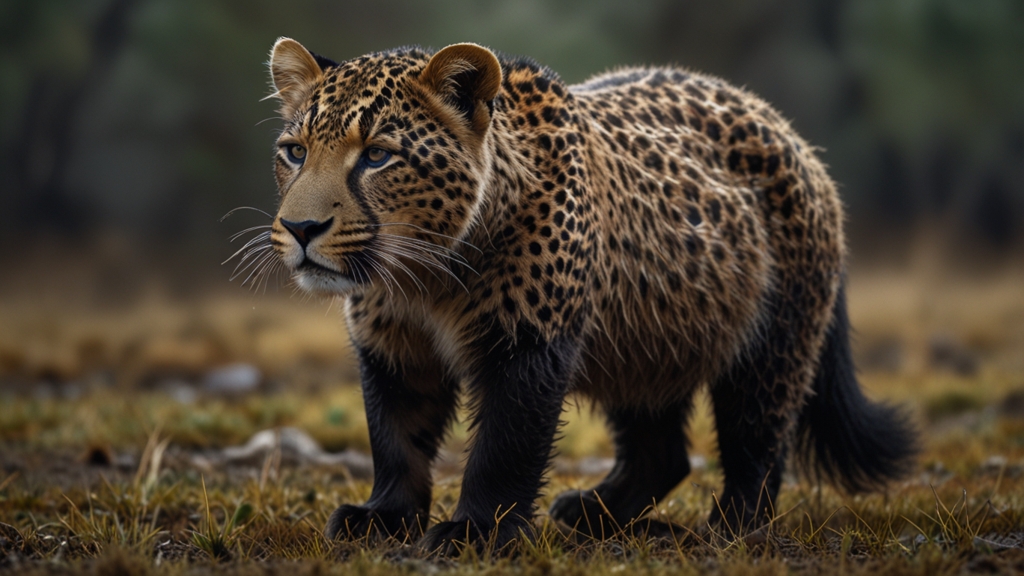The Secret Life of Endangered Species and Their Survival Struggles
Endangered species are those animals and plants that face a very high risk of extinction in the wild. They appear on the International Union for Conservation of Nature (IUCN) Red List and other lists maintained by government and nongovernment organizations. When we talk about endangered species, names like Amur Leopard, Javan Rhino, and Vaquita often come to mind. Yet, beneath the often-highlighted statistics, exists the intricate and lesser-known tales of their daily survival struggles that paint a clearer picture of their secret lives.
The Hidden Struggles of the Animal Kingdom
The ever-changing ecosystems in which these species live are crucial to their survival. For instance, the Amur Leopard depends heavily on dense forests for camouflage and hunting. However, with rampant deforestation and human encroachment, these animals find themselves in a precarious position. It's not just the loss of habitat; it's the fragmentation of their living space which restricts their movement and access to essential resources.
The Javan Rhino, of which fewer than 70 remain, faces habitat loss due to illegal farming activities and natural disasters. The Earth's mightiest creatures are often brought to their knees by the smallest of disturbances.
Predation and competition for food resources add another layer of complexity to the survival struggles. In tightly knit habitats, the decline in prey availability forces predators like tigers and leopards into human settlements, leading to unfortunate consequences for both humans and animals. Additionally, climate changes severely impact food sources and water supplies, leaving species like the polar bear in a perilous state.
Human Impact: A Double-Edged Sword
Human activities are the root cause of numerous threats to endangered species. Poaching, illegal wildlife trade, and pollution are among the detrimental impacts caused by human greed and negligence. In Africa, the majestic elephant is killed for its ivory tusks, and rhinos for their horns. Simultaneously, marine life like the Vaquita is ensnared in fishing nets intended for other species, edging closer each day to irreversible extinction.
While human intervention has predominantly led to the dire status of many species, it is notable that conservation efforts have also had remarkable successes in helping to avert extinctions and start population recoveries.
It is crucial to distinguish between harmful and beneficial human impacts. Conservation initiatives, breeding programs, habitat restoration projects, and stringent laws against poaching have played a pivotal role in saving several species. The resurgence of the Californian Condor and the Giant Panda are testaments to what can be achieved when humanity chooses to nurture rather than destroy.
Conservation: A Ray of Hope
Conservation efforts must be continuous and multifaceted. It's not just about protecting an animal or plant; it's about preserving and restoring entire ecosystems. Organizations worldwide are working tirelessly, employing a range of strategies from anti-poaching patrols to setting up sanctuaries and biosphere reserves. Moreover, community involvement and education are paramount to these efforts. When locals understand the importance of preserving their natural heritage, they become the first line of defense against threats to wildlife.
International cooperation and funding are also critical. Many nations come together to create global policies and treaties aimed at wildlife protection. Through unified efforts, shared research, and collective action, these initiatives can lead to substantial victories in the fight against extinction.
The plight of endangered species and their survival struggles is a complex narrative interwoven with elements of hope and despair. It’s a story that compels humanity to reflect on its actions and the footprints it leaves on the Earth.
Ultimately, the survival of endangered species requires an intrinsic change in human values and behaviors. It demands a concerted effort to live harmoniously with nature, recognizing that the fate of these creatures is inextricably linked to our own. By championing the cause of these voiceless inhabitants of our planet, we also secure the future of our own existence.
Conclusion
The secret life of endangered species is riddled with covert battles and serene yet harrowing resilience. From the dense forests of Asia to the teeming coral reefs of the Australian coast, the fight for survival continues. These species need us just as much as we need a balanced and healthy ecosystem. It is our responsibility to ensure that the stories of these magnificent creatures do not end in oblivion but rather thrive in a legacy of cohabitation and mutual respect.







